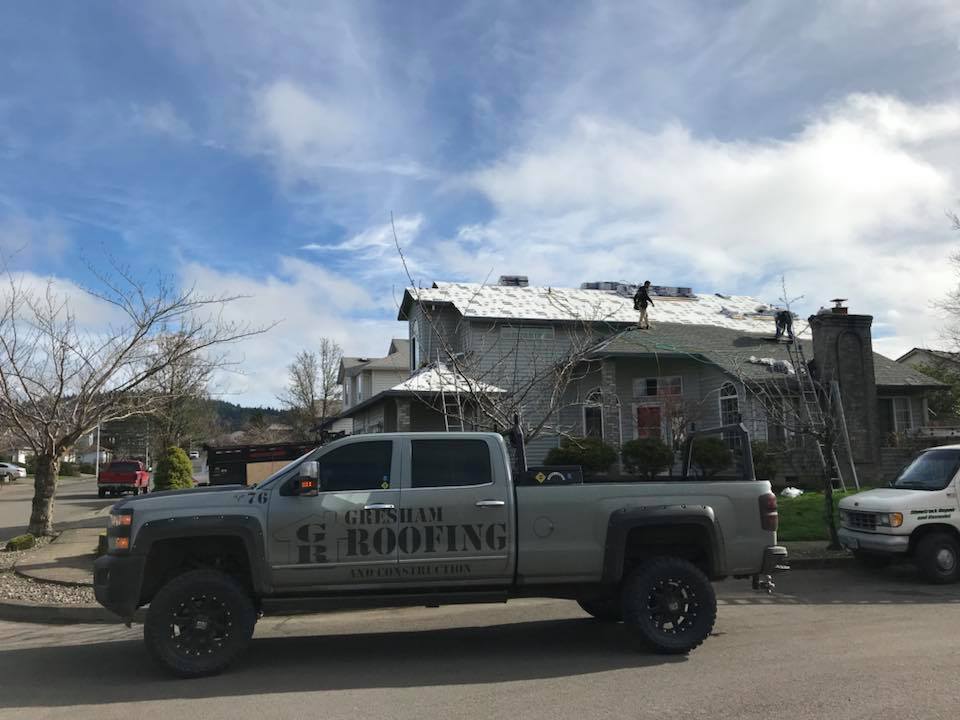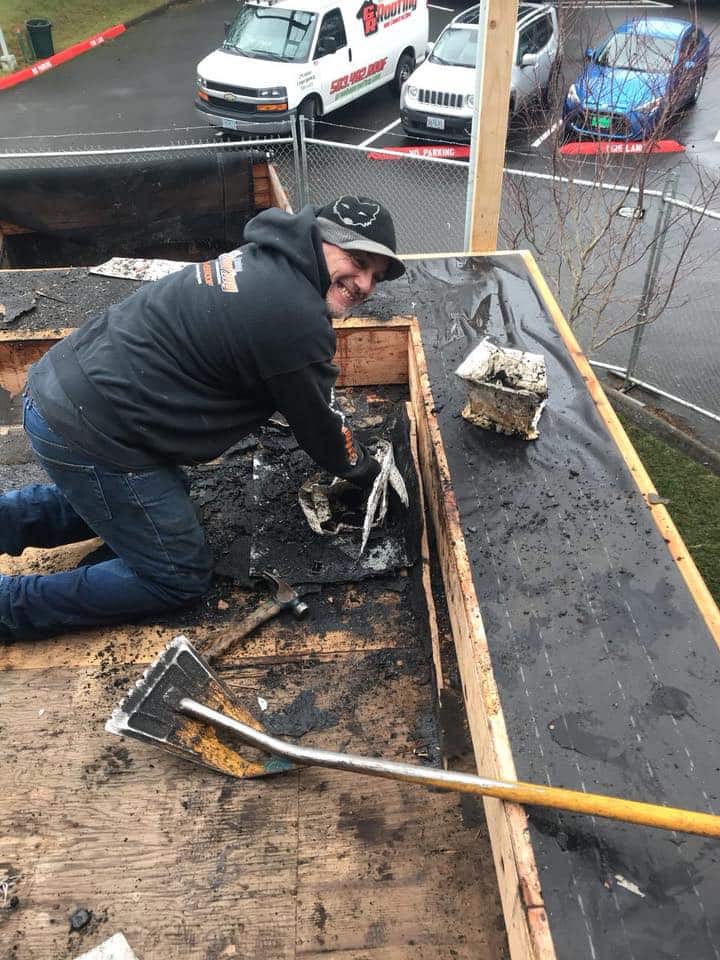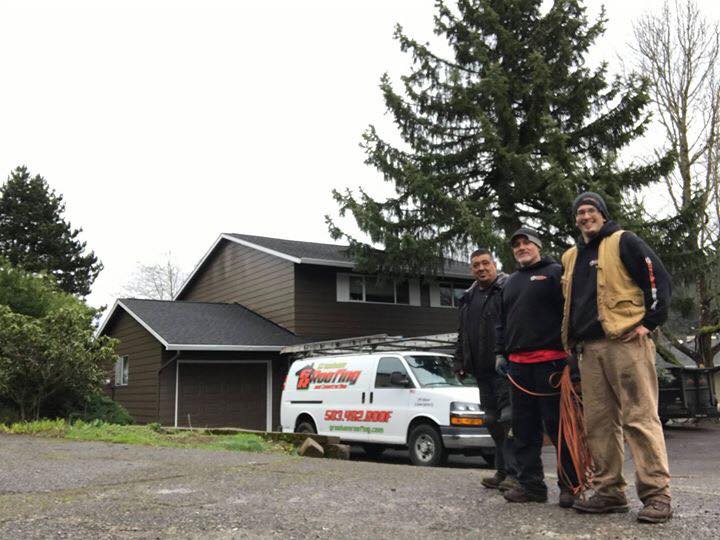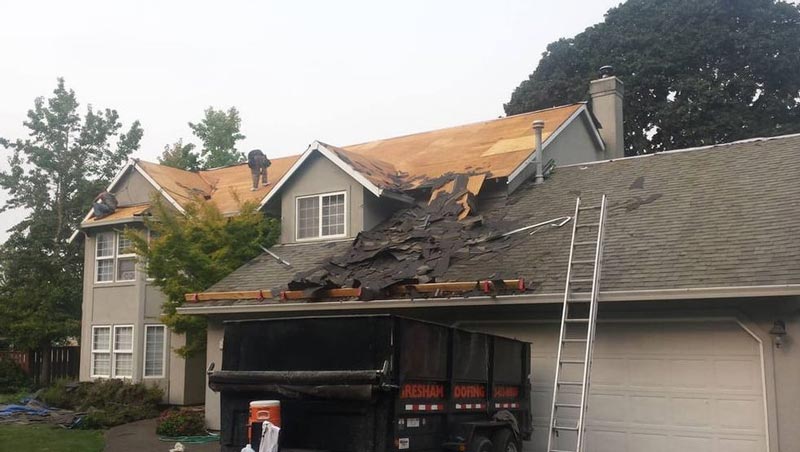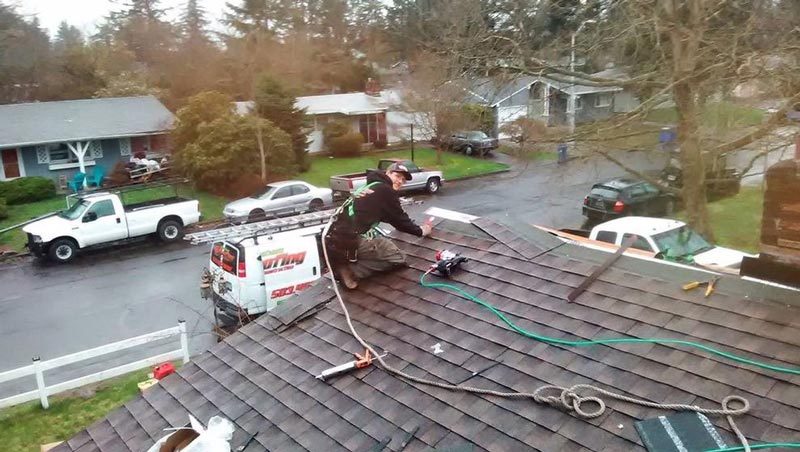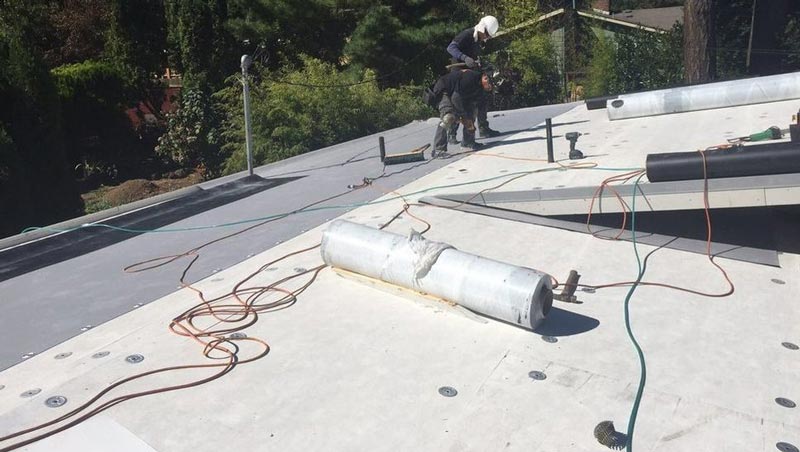Granule loss can happen to asphalt shingles due to several reasons. Depending on the extent of the granule loss, roof replacement may be needed. Today, Gresham Roofing and Construction, a trusted shingle roofing contractor, explains what you need to know about asphalt shingle granule loss.

How Asphalt Shingles Are Made
Asphalt granules adhere to a shingle substrate during the manufacturing process. Through this method, a layer of granular material is created, which helps protect the material against sunlight, UV rays and other natural elements. This protection slowly wanes over the lifespan of the roof due to natural wear and tear.
Is Granule Loss a Serious Issue?
This depends. All roofs will shed some granules shortly after installation–that’s normal and not a cause for concern. But if there’s a significant amount of granule loss on an older roof, it can compromise the roof’s weather protection. If you’re noticing significant granule loss on your roof, call a trusted roofer for an assessment.
Common Causes Behind Granule Loss
Granule shedding is part of the natural aging process of an asphalt shingle roof. Excess shingles can also come loose during the manufacturing, shipping or installation process. You’ll usually see some granule loss as well during the first few months after installation, especially during showers and storms. This is generally not a cause for concern.
Are you looking to repair or replace your roof? Call Gresham Roofing and Construction today at (503) 205-9477 for a free deck or roof estimate. You can also fill out our online contact form!



